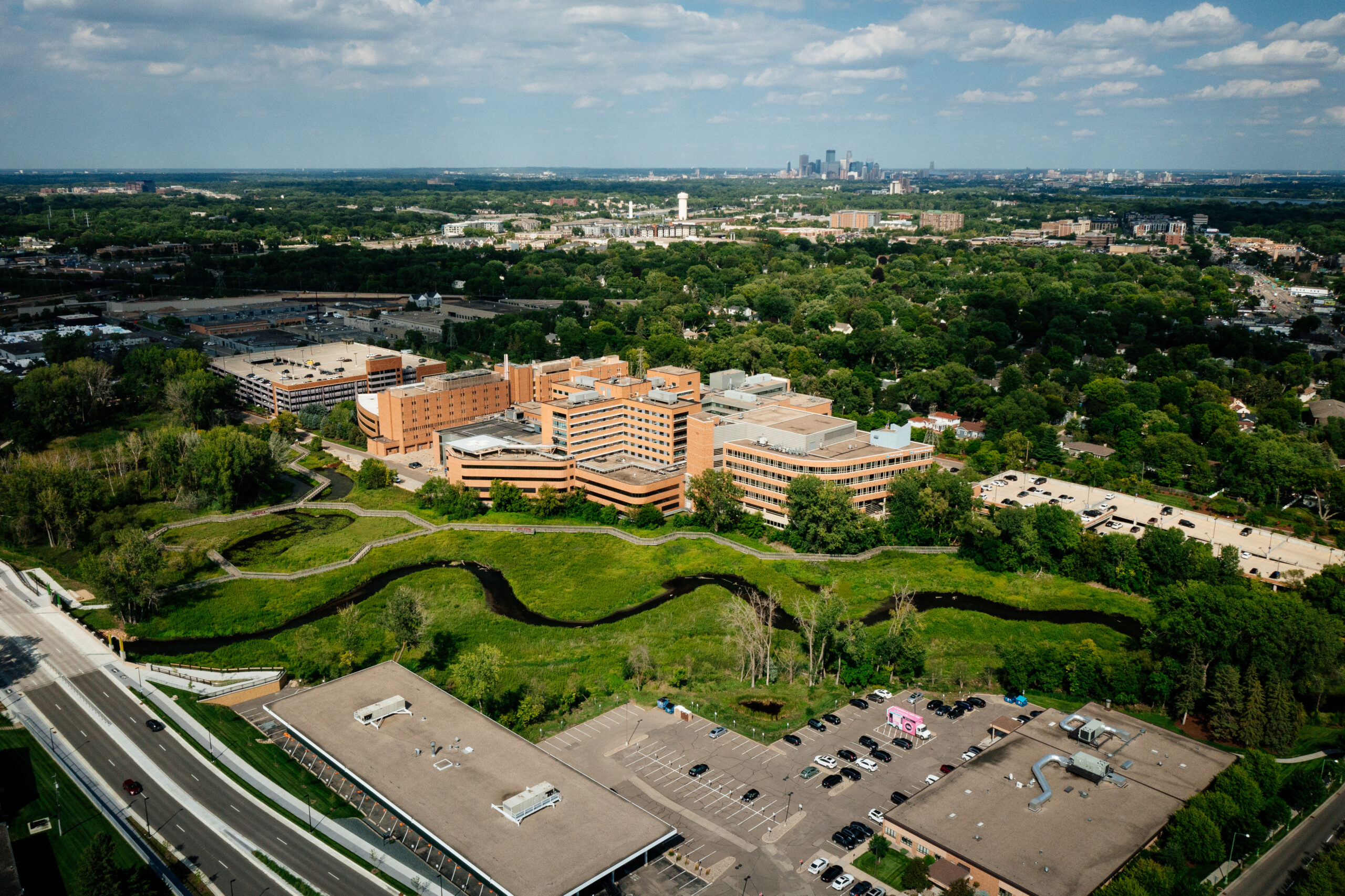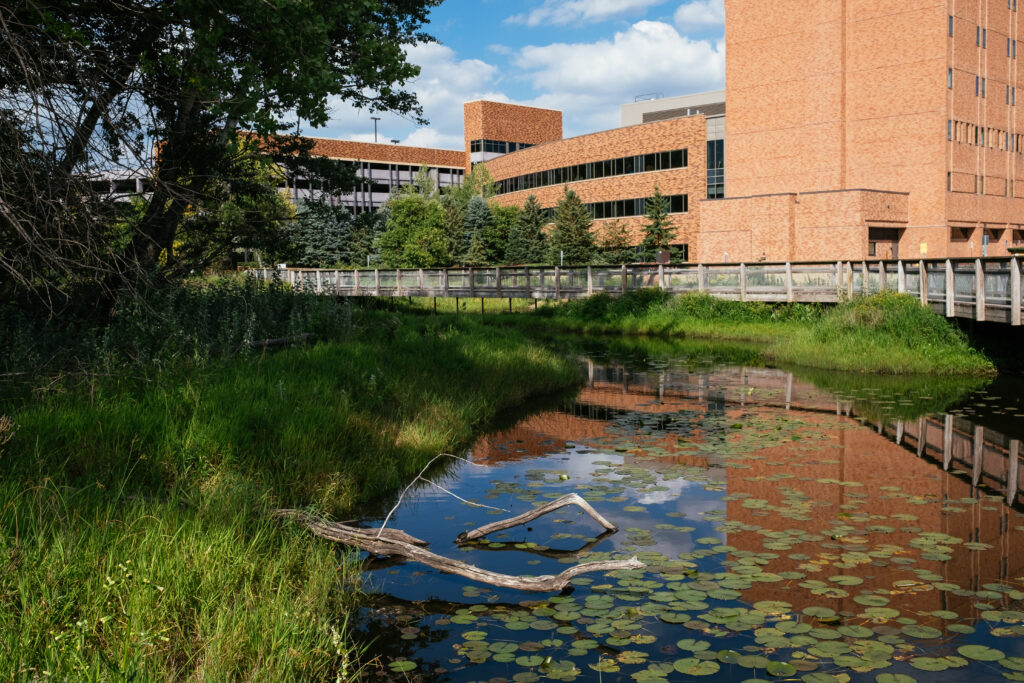
If you’ve ever been around Minnehaha Creek as it flows behind Park Nicollet Methodist Hospital in St. Louis Park, you know it is a unique urban sanctuary. The creek winds placidly through lush green wetlands. Birds, dragonflies and the occasional heron fly through the area and fish are visible in the deep pools on the outer edges of the creek’s curves. A wooden boardwalk brings you up close to the action with areas to quietly observe the scenery.
What you see there is more than a beautiful restoration, however. It is also a symbol of how business and nature can mix when people are willing to find where their interests align. It is a demonstration of the many benefits that come with improving our water and natural areas. This place has special meaning because it sparked a new way of doing things at the Minnehaha Creek Watershed District and continues to pay dividends to this day.

First, a little background. During the construction boom following World War II, Minnehaha Creek was ditched and straightened to make way for new development. Natural amenities like the creek were often seen as barriers to progress and used as ditches to help drain water from the land. Anyone who has paddled Minnehaha Creek through this area will notice that most of buildings are positioned with their back toward the creek, a testament to the attitude about the value of the creek at the time. The combination of these abuses to the stream itself, and the urbanized and industrial nature of the surrounding area, led to this stretch of creek in Hopkins and St. Louis Park to being the most polluted along the 22-mile stream.
In the early 2000’s Park Nicollet approached the watershed district about its plans to expand the Methodist Hospital campus. In a departure from the prevailing attitude of the post-World War II era, hospital leaders recognized that having a natural amenity like Minnehaha Creek posed an opportunity to better serve their patients and differentiate their business in the marketplace.
Working with the hospital, MCWD came up with a plan to return the creek to a more natural shape and restore the surrounding wetlands. The hospital funded a boardwalk that allowed people to enjoy the resource. The project maximized natural resource benefits, created economic value for the hospital and provided a community amenity that boosts ecological and human health.

This project taught us a valuable lesson: by finding where the landowner’s goals aligned with our own, we were able to build a much better project than either of us could have done alone.
Building on the success of the initial partnership, the MCWD and Park Nicollet collaborated on a project to ease flooding issues at the hospital site. Following a similar template of working together early and finding where our goals align, we built a project that protects the hospital from future flooding, restores a wetland, improves habitat and creates another amenity on the hospital campus.
The restoration of Minnehaha Creek at Methodist Hospital is part of one of the largest urban stream restorations in the Twin Cities, known as the Minnehaha Creek Greenway. I will explore the Greenway in more detail in the next installment of my series of columns marking the 50th anniversary of the Minnehaha Creek Watershed District.
